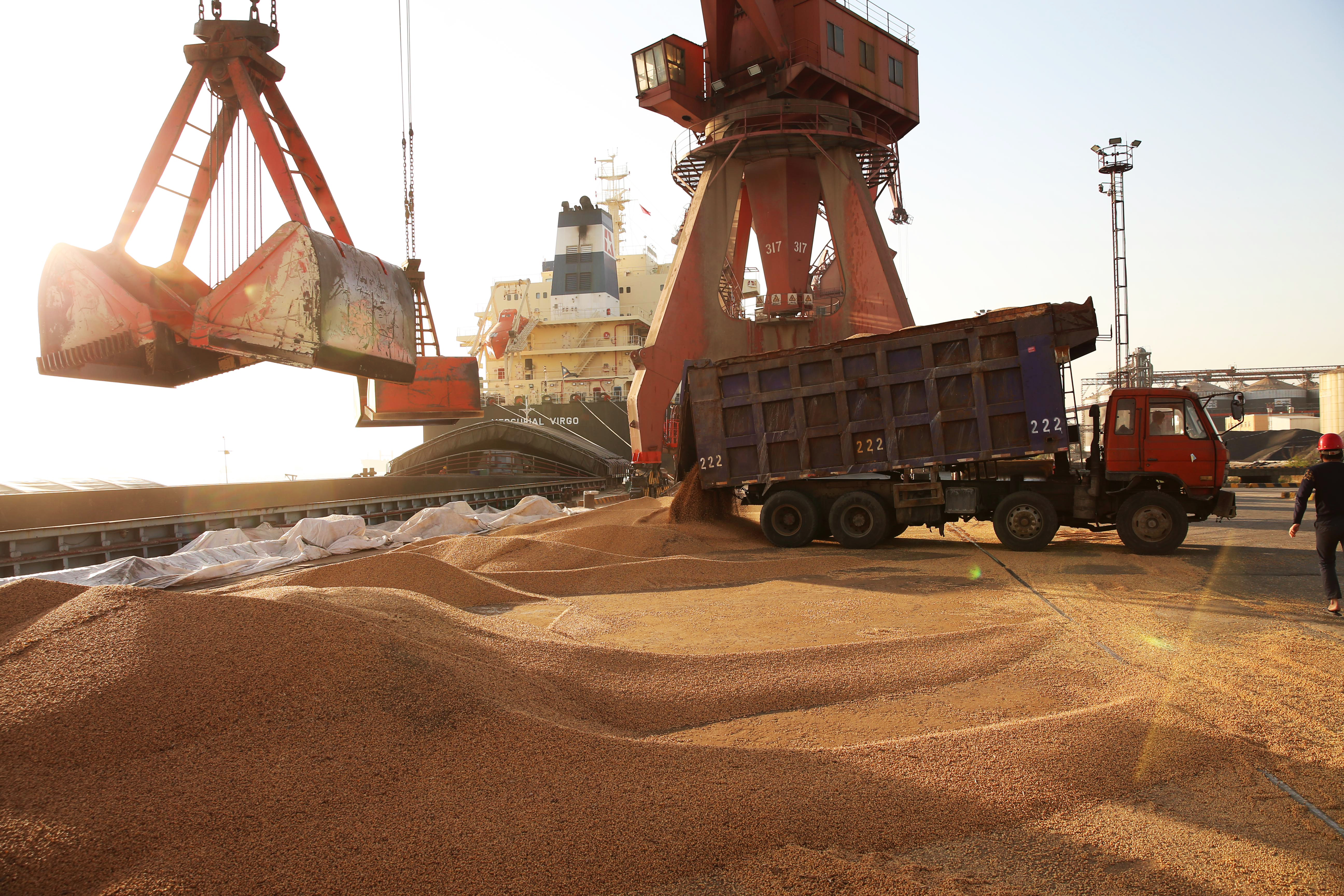Trump trade war to give fleeting boost to US growth
US exports targeted for retaliation from Beijing, including soy beans, spiked in the second quarter, which is expected to drive up GDP growth in the April-June period (-)
Washington (AFP) – The United States is expected to see an exceptional surge in economic growth in the second quarter that President Donald Trump can use to trumpet the success of his economic agenda.
But the unusual result, which economists say could be the strongest in four years, is partly thanks to Trump’s trade wars, and those same disputes threaten to drag growth lower in the coming months and years.
Current forecasts say the second-quarter GDP estimate due out Friday could show growth was anywhere between four and five percent — the fastest pace since the third quarter of 2014.
Such rapid gains are uncommon in the United States: in the last 20 years, or 80 quarters, American GDP growth has exceeded four percent only 13 times.
But there are special factors behind the growth spurt linked to the trade dispute, which includes 25 percent US tariffs on $34 billion in Chinese goods, with more on the way, and steep tariffs on steel and aluminum, which provoked China and others to hit back with import duties on US goods.
Export statistics for May showed a surge of stockpiling of US goods by Chinese importers, particularly crude oil and soybeans, as they raced to buy before Beijing’s retaliatory tariffs took effect, driving up costs.
Exports of US goods targeted by China shot up 15 percent compared to May 2017, according to Commerce Department data. That surge helped drive the monthly trade gap to its lowest level in 18 months, delighting the president.
Crude oil exports to China nearly quadrupled to $866 billion.
Soybeans — a political tender spot that Beijing is targeting with cool calculation in its battle with Trump — saw a 38 percent increase to $209 billion, despite spot prices that at the time were relatively stable.
Chinese importers also bought 80 percent more US cotton, 30 percent more electric vehicles, 25 times more in lemons and limes, 15 times as many American clams, and more than five times as much whisky, the data show.
The trend appears to have continued in June when the Peak Pegasus, a cargo ship piled high with US soybeans, raced across the Pacific but failed to reach the port of Dalian before China’s counter-tariffs took effect at midnight local time on July 5, according to Bloomberg.
– A growth ‘mirage’ –
Pantheon Macroeconomics estimated foreign trade would add as much as a full percentage point to growth in the April-June period, but will become a drag as soon as the third quarter.
Gregory Daco, chief US economist at Oxford Economics, said the second quarter was likely a peak for the economy.
“This may represent a mirage for the US administration by thinking that the US economy is accelerating rather than slowing,” he told AFP.
“If they implement tariffs under the belief that the US economy is strong enough to withstand the hit, then I think they’re mistaken.”
The American economy had much to boast about between April and June: brisk consumer spending, healthy manufacturing, steady job growth and strong business investment. In addition, February’s fiscal stimulus and December’s sweeping tax cuts are sure to juice the growth numbers.
Trump hinted he was eager to see the numbers and told supporters in Wisconsin last month they should pay close attention to the coming result.
“We’re going up. Nobody’s ever seen anything like it and watch those GDP numbers,” he said. “I think we’re going to be seeing fours. And I think we’re going to be seeing fives too.”
But Alan Deardorff, professor of international economics at the University of Michigan, said the scale of Trump’s trade wars was unprecedented, and its effects hard to predict.
“In the post-war period, I don’t think we’ve ever had conflict affecting as much trade as we’re doing now,” he told AFP.
Trump’s truce with the European Union could relieve some of those concerns, as the agreement Tuesday includes a commitment to hold off on threatened tariffs on auto, and end the US steel and aluminum tariffs as well as the EU’s countermeasures.
Even so, economists say there is the possibility Trump’s trade war could become a drag as exports fall and manufacturing slows, while prices rise fueling inflation, and mounting interest rates drive up borrowing costs.
“There are under currents that are brewing,” said Diane Swonk, chief economist at Grant Thornton.
“The good news is for the moment we’ve got a heck of a cushion.”
Disclaimer: This story has not been edited by Siliconeer and is published from a syndicated feed. Siliconeer does not assume any liability for the above story. Validity of the above story is for 7 Days from original date of publishing. Content copyright AFP.


